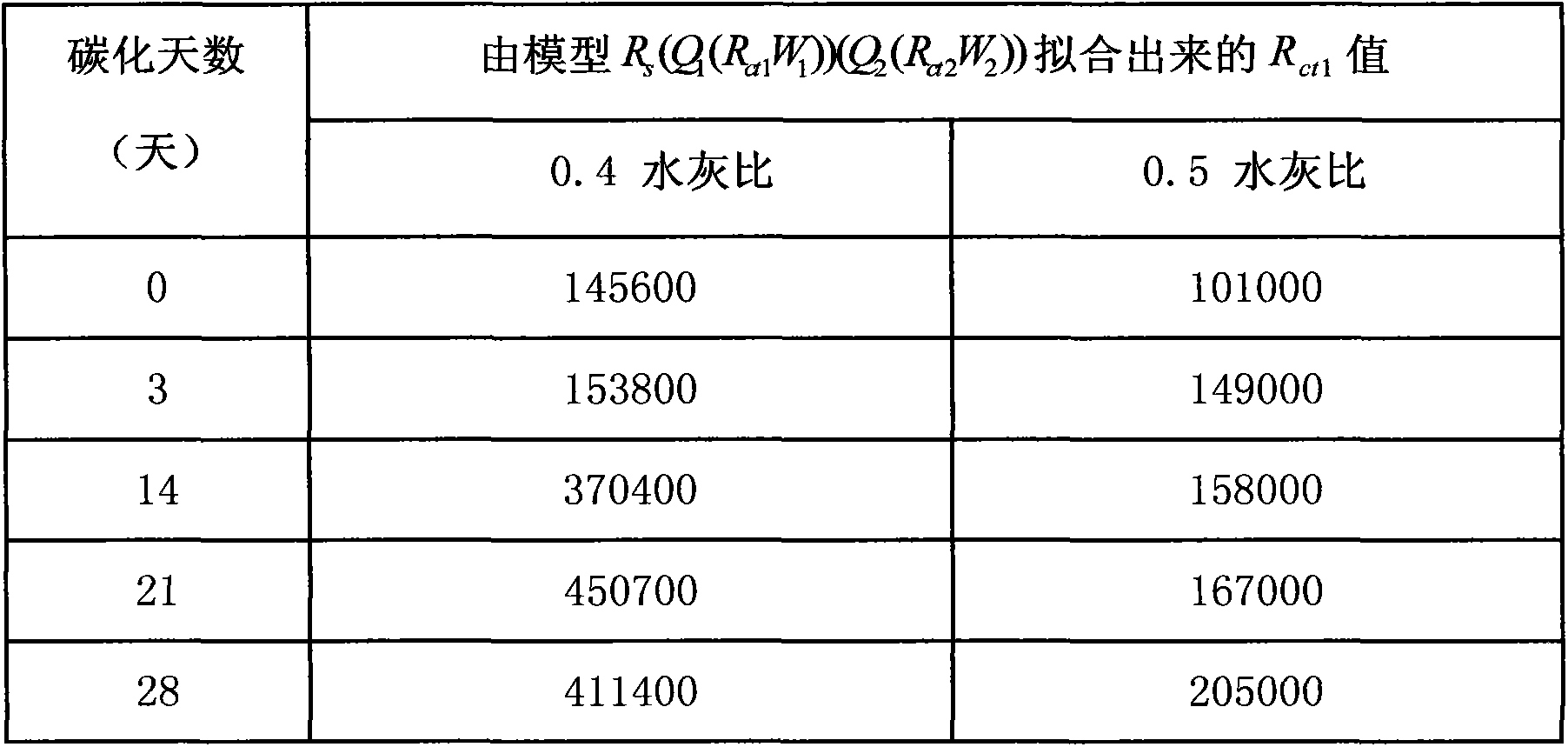Method for testing carbonation depth of cement-base material
A cement-based material, carbonization depth technology, applied in the direction of material electrochemical variables, etc., can solve the problems of non-repeatability, limited sampling times, reading errors, etc., to achieve the effect of convenient and feasible testing, easy disassembly and installation
- Summary
- Abstract
- Description
- Claims
- Application Information
AI Technical Summary
Problems solved by technology
Method used
Image
Examples
Embodiment 1
[0026] 1. Sample preparation: The 525-type composite Portland cement produced by Shenzhen Haixing Onoda Cement Co., Ltd. was prepared in a special mold (patent number: ZL 201120473976.2). The water-cement ratio of the cement paste test block was 0.25, 0.3, 0.4, 0.5, prepare 24 test pieces for each water-cement ratio, and the size of the test pieces is 160mm×40mm×40mm.
[0027] 2. End-unloading template: After the cement specimen is cured for 28 days, remove the 40mm×40mm electrode plates at both ends of the mold, and the remaining four 160mm×40mm high-insulation organic polymer plates are still sealed to the specimen.
[0028] 3. Carbonization: Put the mold after removing the electrode plate together with the test piece in the mold into the accelerated carbonization box. The carbon dioxide concentration in the box is 20%±3%, the relative humidity is 70%±5%, and the temperature is 20°C ±5°C.
[0029] 4. Test: During the carbonization process, conduct impedance spectrum tests o...
Embodiment 2
[0043] The steps and methods adopted are as in Example 1, the difference is: 1) Test object: cement mortar material, water-cement ratio 0.40, mortar-sand ratio: 1:2, 1:3, 1:4; 2) Test days: 0 days, 3 days, 7 days, 14 days, 36 days, 60 days, 90 days, 120 days.
[0044] Table 51: Parameter R of mortar with mortar ratio of 2, 1:3, 1:4 at different carbonization days ct1 the value of
[0045]
[0046] Table 6 The measured value of the carbonation depth of the mortar 60 days ago.
[0047]
[0048] Table 7 Calculation of carbonation depth at 90 days and 120 days
[0049]
PUM
| Property | Measurement | Unit |
|---|---|---|
| depth | aaaaa | aaaaa |
Abstract
Description
Claims
Application Information
 Login to View More
Login to View More - R&D
- Intellectual Property
- Life Sciences
- Materials
- Tech Scout
- Unparalleled Data Quality
- Higher Quality Content
- 60% Fewer Hallucinations
Browse by: Latest US Patents, China's latest patents, Technical Efficacy Thesaurus, Application Domain, Technology Topic, Popular Technical Reports.
© 2025 PatSnap. All rights reserved.Legal|Privacy policy|Modern Slavery Act Transparency Statement|Sitemap|About US| Contact US: help@patsnap.com



